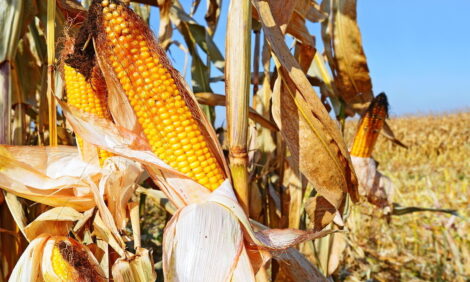



Quantifying the Benefits of Rinderpest Eradication
Although Rinderpest has been officially eradicated since 2011, the box is not closed yet as laboratories continue harbouring the costly virus and researchers hope to learn more about the disease.Rinderpest virus was arguably the first weapon used in what is now called “bioterrorism.” Folklore maintains that Genghis Khan sent rinderpest-infected cattle into the herds of his enemies to wipe out their food supply, making them easier to conquer, write the media team at the World Food and Agriculture Organisation (FAO).
In more modern times, an outbreak in the 1980s killed millions of cattle and wild ruminants across Africa and continued to devastate farmers and pastoralists in some of the world’s poorest rural areas.
Rinderpest: Current State of Play
Today, thanks to the efforts of FAO along with a host of other international organizations and national veterinary services, rinderpest has been wiped from the face of the earth.
The FAO add that it was declared eradicated in 2011. The concerted global effort to overcome rinderpest dates back many decades, and was brought to a successful conclusion by the Global Rinderpest Eradication Programme led by FAO in Africa, the Middle East and Asia.
Far from seeing eradication as the end of the story, FAO views it as the beginning of an opportunity to conquer other devastating veterinary diseases, using the lessons learned from rinderpest.
*
"Household income across Ethiopia rose by €38.1 million as a result of rinderpest control and eradication."
On an epidemiological level, the world is in a “postrinderpest era,” with the disease eradicated, reports the FAO team. However, eradication campaign have the potential to continue making positive contributions to veterinary research and improved animal disease management.
It is only now that the socioeconomic effects of rinderpest’s eradication can be fully appreciated. It has protected tens of millions of livestock keepers from losses, and protected wildlife populations across continents – the latter safeguarding the biodiversity and resilience of ecological systems. Chad credits a three percent increase in its GDP to the absence of rinderpest.
Household income across Ethiopia rose by €38.1 million as a result of rinderpest control and eradication. Countries have been able to assess their internal rates of return, in terms of a benefit-cost ratio range, from 11 percent in Ivory Coast to 118 percent in Burkina Faso.
In total, FAO estimates that eradication of rinderpest has meant some USD 920 million in annual economic benefits in Africa alone. This underlines the importance of supporting programmes that aim to avert the return of the rinderpest pathogen, as well as those focusing on improved disease management and prevention of other diseases affecting the world’s livestock, biodiversity and food and nutritional security.
Rinderpest Research Can Continue in Bio-secure Laboratories
Although rinderpest has been eradicated from fields and pastures, virus samples remain quite alive in the dozens of laboratories that participated in the control campaign. Laboratory freezers still contain samples that were used to diagnose or study the disease in animals they tested, or to manufacture vaccines.
FAO is now working with partners to determine the best way to destroy the remaining strains of samples while keeping some – under the safest environments in bio-secure facilities – for further research or vaccine development if needed.
This requires working with ministries as well as laboratories where the strains exist to determine what, if any, further research might be conducted. For example, smallpox was eradicated in 1978 but laboratories continued studying strains from different parts of the world.
What was learned in the post-smallpox era has contributed to the better understanding of other pox viruses. In fact, current studies on capripox, which affects cattle,sheep, goats and wild animals,are compared with that smallpox research. Such research could help if similar diseases emerge in the future.
The fact that rinderpest no longer poses a threat in the field means that young veterinarians and community animal health workers, as well as farmers and livestock keepers, have never seen actual cases, leaving them unprepared should an outbreak occur. Thus, not only do veterinarians need continuing education on rinderpest recognition and control, the vaccines and diagnostic materials used for rinderpest identification must also be kept current.
Blood Samples Contain Treasure Trove
Numerous laboratories around the world also contain blood serum samples taken from animals during the surveillance and eradication efforts.
Due to the enormity of the campaign, they were collected from extremely remote areas that researchers had never reached before and probably never will again.
From the beginning, FAO recognized their potential to provide information for future research, and requested that the laboratories keep the samples properly stored.
Thus, the laboratories now house thousands upon thousands of vials filled with clues that can be used to see the footprint of other diseases, such as foot-and-mouth disease or Rift Valley fever.
Taking them out of the freezers and studying them could be the first step on a treasure hunt that increases veterinary knowledge on prevalence of diseases and their geographical range.
This is according to an FAO article.
March 2014



